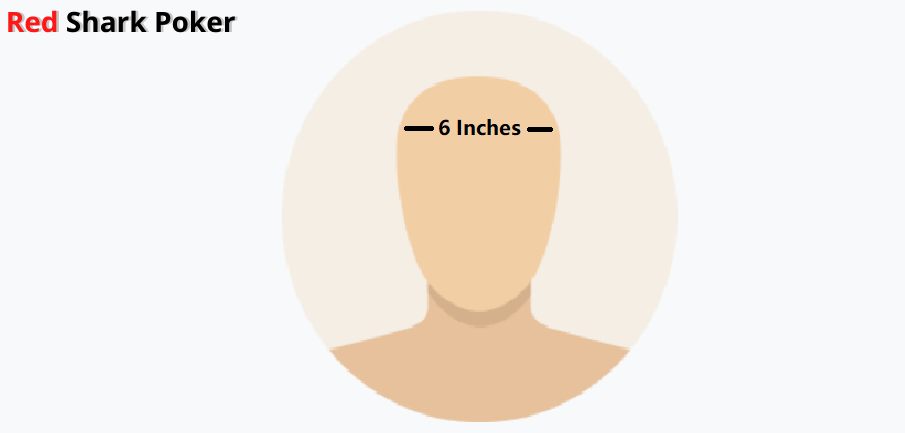

“Cards are war in disguise of a sport.”
~ Charles Lamb
You must have heard this quote before, but do you know where the war takes place? It’s not at the tables but on a battlefield that is only 6 inches wide. Yes, that battlefield is the human mind.

Besides the interplay of mathematics and probability, there is an intense psychological battle going on in the minds of the players. You try to get into your opponent’s head to figure out why he/she made such a play and how you can counteract them. You start to play a metagame or “play a game within a game”, where you try to outsmart your opponent by thinking a step ahead of them.
This level of thinking by figuring out why your opponent played in a certain way leads to better awareness and a profitable play. You will be playing a thinking man’s game where you use all the information you have observed and play a step ahead of your opponent. Let’s delve deeper into the psychological aspect of the game. Warning! What you are about to read can be described as some “inception” level complexities. So, fasten your seat belts and carefully read the following to get your mind blown away.

Multiple Level Thinking in Poker
What you are about to read might hurt your brain. But you will love it! Most of the poker players’ thoughts are limited to two levels:
- What are my cards?
- What cards does my opponent have?
But it can go deeper! It is like finding what’s in a box within a box within a box within a box and so on! Let’s look at the six levels of thinking, also known as multiple level thinking in poker.

Level 0: I don’t know what I am doing.
Level 1: What are my cards?
Level 2: What cards does my opponent have?
Level 3: What does my opponent think of my hand?
Level 4: What does my opponent think that I think they have?
Level 5: What does my opponent think that I think they think I have?
You must be scratching your head after reading about multiple level thinking in poker. We feel you! Let’s understand each level in detail.
Level 0: The Confused Player

“I am not really thinking.”
Level 0 players have no idea what they are doing. They play with no strategy or play while drunk. These players are generally beginners who have just started playing poker. Sometimes they get confused between a straight and a flush. It is easier to spot a Level 0 player by just looking at how they play. They usually play every hand and limp from early positions. You get a lot of value from these players as they tend to call till the showdown. However, sudden aggression from them indicates that they have a strong hand. So, you should have a stronger hand than theirs when faced with aggression.
We seriously hope that you don’t fall into this category. If you do, we advise you to read all the strategies in our open poker school, which is free for everyone. Learn poker strategies for free: Open Poker School
Level 1: The Straightforward Player

“What are my cards?”
These players know the rules of the game, and their plays are strictly based on the strength of their hands. They bet when they connect with the board and fold on a missed board. They are too engrossed with their hand and do not think about their opponents’ cards or ranges.
Such players play a pretty straightforward game and rarely bluff as they don’t tend to consider their opponents’ ranges. They sometimes ignore the complexities of the game like an opponent could be holding a better set than their set. They usually play tight and wait for a strong hand to open. If you face aggression from them, you must have a stronger hand than theirs to beat them at the own game.
Level 2: The Watchers

“What does my opponent have?”
The majority of poker players fall into this category. These players observe how their opponents are playing and think in terms of what cards they can have. They can zero in on what cards the opponent might hold based on the preflop action, board texture and post-flop bet sizing. They can detect if the opponents are playing tight or loose and are capable of adjusting their strategies.
Level 2 players have some experience of playing poker but are likely to be net losers. These players think that their opponents are just playing their hands. They assume that the opponent is incapable of making tricky moves. These players have not reached level 3 thinking, which we will discuss next, and miss out on using the optimal strategies in the required situation.
Most of these players play a tight-aggressive style. As they will be watching you closely, you can bluff by representing a stronger hand based on your preflop action and board texture.
Level 3: The Conscious Player

“What does my opponent think of my hand?”
Players who have this level of thinking are winning players as they are conscious of their opponents’ thoughts. They are aware of what their opponents are likely thinking and play through the eyes of the opponents.
Such players are aware of how their opponents think of their image and ranges. If their opponent perceives them to be loose, they play tight. If the opponent perceives them to be tight, they play loose. These players are good at bluffing as they can represent the hands that their opponent thinks they have with big bets and raises. Also, they can extract good value with strong hands if they think that their opponent thinks that they are bluffing.
Level 3 players use an aggressive stealing strategy and isolate weak players with large raises. They are positionally aware players and use their position to strategize based on what their opponents are thinking of them.
Level 4: The Enlightened Player

“What does my opponent think that I think they have?”
A very few players are able to reach this level. These players are the biggest winners at the table who have a complete understanding of their table image and how you perceive them.
They will plan their entire plan of action even before they decide to enter the pot. They fully understand the dynamics of the game and try to put themselves in situations that are most profitable.
It is difficult to identify a level 4 player as you would never know when you are up against such a player. As they are very conscious of their table image, they will project their image in a way that you want to think of them. They are the masters of human psychology involved in the game of poker.
Level 5: The Poker God

“What does my opponent think that I think they think I have?”
This is where a player becomes a poker god. It is quite inexplicable to describe how this thought process works. If you face such a player who thinks in this way, the best advice would be to leave the table ASAP! There is no way that any mortal would have any chance against such a god. There is no use to talk about this level as we do not know to play at such a level!
Evaluation of Multiple Level in Poker
We hope that you are quite enlightened by what you have learned today. To be very honest, mastering multiple level thinking in poker takes time. However, when you play, you should be conscious of your thought process and identify your opponent’s level of thinking.
Multiple level thinking in poker can be really profitable when you are playing a step ahead of your opponents. However, you need to take certain precautions. You must accurately identify your opponent’s level. If you make incorrect assumptions, your whole strategy could go down the drain. So, it is really important to observe your opponent for a good number of hands before assigning any level. Your opponent can also change his/her level as the sessions go longer. So, be careful – They might be playing a metagame with you too!




